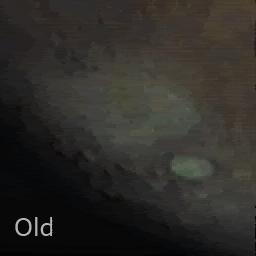QUOTE (ugordan @ Sep 14 2008, 07:43 PM)

That said, I wonder how long an exposure can you get wih the VMC?
Ok....first off - the VMC exposure range is pretty wide. There are two exposure ranges supported -
- 0.4 ms to 191.6 ms in increments of 0.8 ms
- 200 ms to 95800 ms in increments of 400 ms
The widest range tested was in our first two observations in 2007, the first where we almost missed the planet here:
2007-01-28 Observation, and the second where we got our first disc image here:
2007-02-26 Observation. I'll look up the exposure ranges used here for you, but I know we only just touched the longer range.
For a long exposure test pointed at deep space I might see what I can schedule as I'd be interested to see how VMC performs in those conditions too, I'll keep you posted on my progress.
QUOTE (jekbradbury @ Sep 14 2008, 10:57 PM)

I am trying to organize the images by position in the orbit
Not sure exactly what you're trying to do here, but please let me know a bit more and I'll see how we can help. If you mean what point in the orbit, almost all VMC observations were taken just after apocentre. If you mean ground location it's a bit more tricky as the MEX orbit precesses in Argument of Periapsis to allow our pericentre to not only be over different longitudes but also different latitudes (although longitude obviously varies rapidly with Mars spinning, the latitude precession is much slower, over the course of a year).
QUOTE (jekbradbury @ Sep 14 2008, 10:57 PM)

What is the actual orbital period? Alternatively, would the SPICE kernels have this data?
Ok...the MEX orbital period has changed throughout the mission. SPICE kernels will give you a full, complete and accurate definition of the MEX orbit, but there are some shortcuts you can take. If you go to the MEX SPICE server here:
ftp://ssols01.esac.esa.int/pub/data/SPICE/MEX/kernels/ and go into the orbnum directory you'll find a .ORB file that lists all the MEX orbits. The column
OP-Event UTC APO gives the apocentre time for each orbit - so the period is the duration between any two adjacent values in this column. For even more detail on the MEX orbit you can use the EVTM_ files at the auxilliary data server here:
ftp://ssols01.esac.esa.int/pub/data/ESOC/MEX/ (Just take the highest version number file for the latest).




